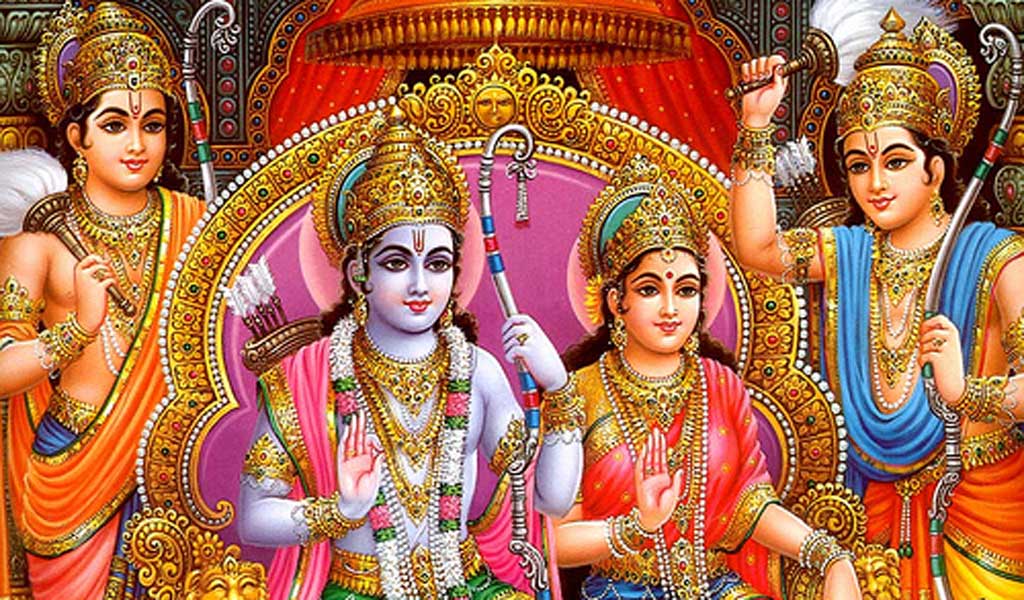Mythology
Ramayana Vs RamCharitManas: The Difference!

Ramayana is one of the greatest Indian epics amongst all the Vedic scriptures. Most people use the words, Ramayana and RamCharitManas interchangeably. Although both the books describe the journey of Rama, the Lord Vishnu’s incarnate on Earth, only a few know that both the books are different versions presented by different authors in different eras.
In fact, there are many differences between Ramayana and RamCharitManas. Here are some of the important differences.
- Ramayana is written by sage Valmiki in Treta Yuga in the Sanskrit language. On the contrary, RamCharitManas was written by the great poet Goswami Tulsidas in Kaliyuga in the Awadhi language in the 15th century AD (1511–1623).
- The word Ramayana is comprised of two words Ram and Aayanam (Story), which means Ram’s story, while the word RamCharitManas is derived from three words Ram, Charita (good deeds) and Manas (lake) which mean Lake of good deeds of Ram.
- Ramayana is composed of seven chapters or Kandams, namely, Bala Kandam, Ayodhya Kandam, Aranya Kandam, Kishkinda Kandam, Sundara Kandam, Yuddha Kandam, and Uttara Kandam. RamCharitManas also consists of seven chapters; however, there is a difference that Tulsidas named the Yuddha Kandam as Lanka Kand.
- Ramayana has been written in a format of ‘Slokas’ while RamCharitManas has been described in ‘Chaupais’ format. Ramayana is considered as the original story of Lord Ram and his journey, while RamCharitManas is the retelling of the Ramayana in which Tulsidas has acknowledged Valmiki in the epic manuscript.
- According to Ramayana, King Dasaratha had 350 wives out of which only three were considered as his principal wives, namely, Kausalya, Kaikeyi, and Sumitra. However, RamCharitManas mentions the King had only three wives.
- Ramayana depicts Lord Hanuman as a human being who belongs to the Vanar tribe. Here, Vanar is a tribe living in the forest. The word Vanar was derived from words — Van (forest) and Nar (man). On the other hand, in RamCharitManas he is depicted as a monkey and ‘Vanar’ is refer to species of Monkeys.
- As per Ramayana King Janaka had never arranged Sita Swayamvar as a mass function. It is mentioned in Ramayana that whenever any mighty individual used to visit Janaka, he used to show them the Bow of Shiva or Shiva Dhanusha and asked them to lift it. Therefore, when Vishwamitra visited Janaka along with Rama and Lakshmana, Janaka showed them the bow and asked Lord Rama to lift the bow. To Janaka’s surprise, Rama lifted the bow and hence Janaka proposed Rama to marry Sita.
On the contrary, in RamCharitManas, a Sita Swayamvar was organized by King Janaka and there was a competition to lift the bow of Shiva and Sita would marry the person who could lift the bow without breaking it. Nobody could lift the bow except Rama. However, Rama lifted it but broke it in the process.
- Ramayana depicts the abduction of Sita was real. She was captured forcefully by Ravana and Rama rescued Sita and she was asked to prove her purity to the world by taking the Agni Pariksha. On the contrary, RamCharitManas stated that Sita was never kidnapped. However, Rama predicted the kidnapping of Sita and created a clone of Sita. The real Sita was sent to Agni Deva and the Agni Pariksha was just a way to exchange clone of Sita with real Sita.
- As per Ramayana, Ravana came to fight Rama on the battlefield twice. First, he came at the beginning of the war and was humiliated by Rama but left alive. The second time, he came at the end of the war and was killed by Rama. On the other hand, in RamCharitManas, Ravana came to the battlefield only once at the end of the war.
- In Ramayana, Rama is portrayed as “Maryada Purushottam” which means a man with exceptional virtues or the best of men with excellent conduct. However, in RamCharitManas, Rama is depicted as Supreme Being, the incarnation of God and possessed a divine touch in his deeds. His actions were depicted as the Lord’s righteous ways to destroy evils and establish Dharma.
- Ramayana ends when Rama completed the journey of his mortal body by drowning himself in the Saryu river after he was saddened by the absence of Sita and Lakshmana. Sita had disappeared into mother Earth and Lakshmana had drowned himself in the Saryu river. But RamCharitManas ended with the birth of the twin sons Lava and Kusha to Ram and Sita and there was no mention of the death of Lakshmana or How Sita disappeared.




























